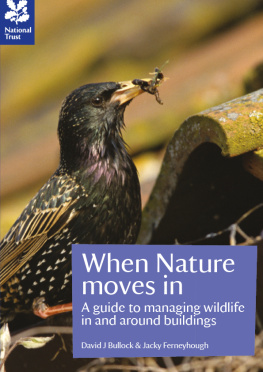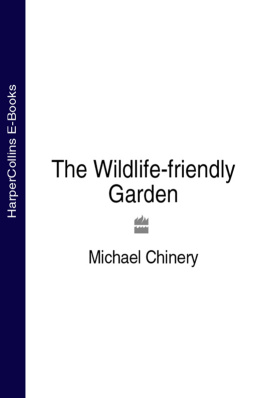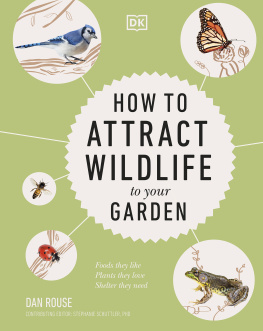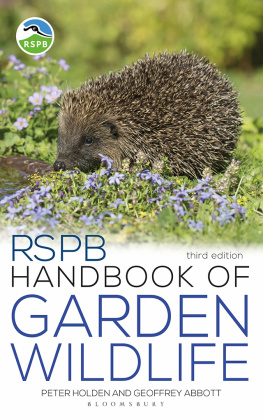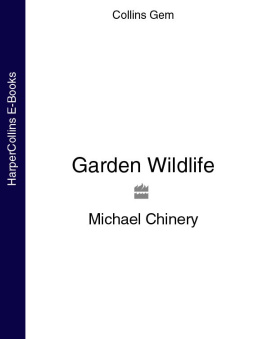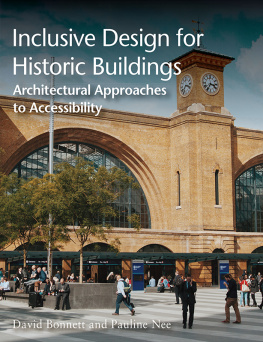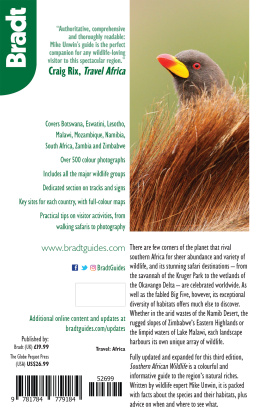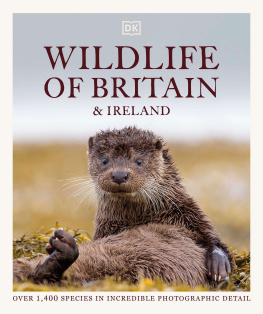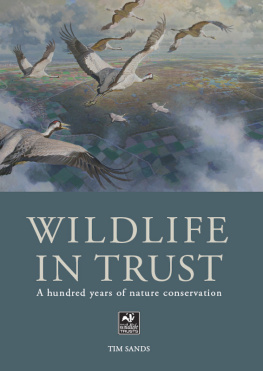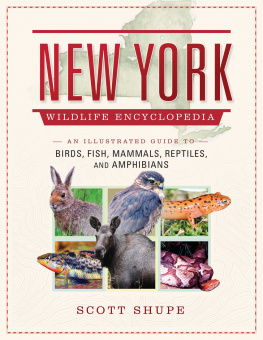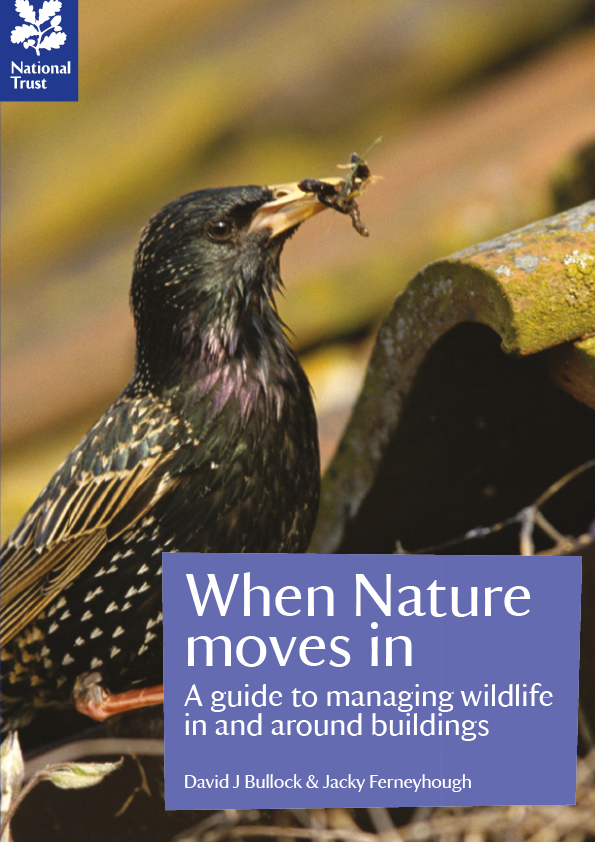Published in the United Kingdom in 2013 by the National Trust Heelis, Kemble Drive, Swindon SN2 2NA
National Trust 2013
The National Trust is a registered charity no. 205846
Second edition, fully revised and updated by David J Bullock, Head of Nature Conservation, National Trust, and Jacky Ferneyhough, Technical Editor/Writer.
Proofread by Anthony Lambert.
All rights reserved. No part of this publication may be reproduced, stored in a retrieval system, or transmitted in any form or by any means, mechanical, photocopying, recording or otherwise, without the prior permission of the copyright holder.
Print edition ISBN 978-0-7078-0425-5 eBook ISBN 978-0-7078-0426-2
A CIP catalogue record for this book is available from the British Library.
Designed by TwoPlus Design. Printed by CPI Antony Rowe (Eastbourne).
Cover photograph Common starling taking a worm to nest under a roof. National Trust Images/Nature PL/Paul Hobson (186332)
Back cover photograph Maidenhair spleenwort growing into stonework at Arlington Court, Devon. National Trust Images/Ross Hoddinott (171416)
Reasonable efforts have been made to trace the copyright holders and we apologise in advance for any unintentional omissions, which we would be pleased to correct in any subsequent edition of this publication.
Acknowledgements We thank Alan Cathersides, Senior Landscape Manager, English Heritage, for his interest and financial support for this publication.
Special thanks are owed to Robert Child, Pest Consultant; Rev. Nigel Cooper, Church Buildings Council; Tony Gent, Amphibian and Reptile Conservation; Edward Mayer, Swift Conservation; and staff at the National Trust who commented on earlier drafts of this manual: Richard Allen, Simon Barker, Debbie Berriman, Nigel Blades, Peter Brash, Nathan Buckell, Rory Cullen, Andy Foster, Ray Hawes, Joanne Hodgkins, Janet Lister, Crispin Scott, Philip Tew, Daniel Thomas and Chris Turner.
This book can be ordered direct from the publisher at www.shop.nationaltrust.org.uk or try your local bookshop. The eBook version is available from all good online retailers.
Foreword
In recent years, there have been two responses to climate change. Animals and plants are adapting by spreading northwards and we humans are trying to mitigate our impact by reducing carbon emissions in the construction of buildings. Energy-efficient eco-friendly houses, and sources of renewable energy such as wind turbines and solar panels, are increasing in use. Old houses with large roof voids attractive to bats, cavities in the eaves in which swifts nest and gaps in walls where mason bees and plants can flourish are in decline. Mammals and birds, such as peregrine falcons and foxes, once exclusively seen in the countryside, have moved into urban areas. Here, we provide some guidance on how to care for and manage both wildlife and buildings sustainably.
The National Trusts When Nature Moves In is intended as a guide to all those planning work conserving and restoring buildings. Originating as a guide for National Trust staff, it introduces some of the main dilemmas involved in sustainably managing wildlife for builders, planners, architects and those of us lucky enough to share our dwellings with wildlife. It follows Bats in Traditional Buildings (Howard & Richardson 2009) published with English Heritage and Natural England.
Its purposes are:
1.to show the importance of built structures for wildlife, some of which is threatened, in decline and largely reliant upon buildings
2.to help those who repair or restore buildings to maintain or enhance the wildlife in their care
3.to stimulate creative thinking about how wildlife can be part of energy efficient and eco-friendly buildings.
Wildlife in and on places that we inhabit is nothing new, of course. House mice, bedbugs and swallows have always been close companions of humans. In 1960 George Ordish published an account of the lives of invertebrates, birds and mammals encountered at Bartons End, a house in Kent ( The Living House ). His depictions of (albeit speculative) fluctuations in the abundance of some species over four centuries from the sixteenth century to the mid-twentieth century remind us of how wildlife in buildings has changed over the years, and how it will change again. Termites, thought to have been eradicated, have reappeared in a house in Saunton, Devon, scorpions persist at Sheerness Docks, Kent, and both species should find it easier to survive our increasingly mild winters, ultimately becoming established in more buildings and spreading further north.
So wildlife in and on our buildings is special. It is often different and more diverse than in the surrounding countryside, and this is the wildlife that most people first encounter as a child.
The crumbling wall that surrounded the sunken garden alongside the house was a rich hunting ground for me. It was an ancient brick wall that had been plastered over, but now this outer skin was green with mosses, bulging and sagging with the damp of many winters. The whole surface was an intricate map of cracks, some several inches wide, others as fine as hairs. Here and there large pieces had dropped off and revealed the rows of rose-pink bricks lying beneath like ribs. There was a whole landscape on this wall if you peered closely enough to see it. The inhabitants of the wall were a mixed lot, and they were divided into day and night workers, the hunters and the hunted.
Gerald Durrell, My Family and Other Animals (1956)
David Bullock
Head of Nature Conservation National Trust, 2013
How to use this guide
This guide is split into two parts.
Part I: Planning work on buildings
For those considering construction or maintenance work, this section looks at where and how wildlife might use buildings and when that might be problematic. It covers various different areas (eg roofs, exterior walls, etc) where repairs may be necessary and identifies possible problem species to look out for. Cross-references are provided to more in-depth information located in Part II.
Part II: Wildlife species and how to deal with them
This section covers animals, plants and other wildlife, when they are active and gives detailed guidance on:
Commonly encountered species
What you can do
When to intervene
When to call in an expert
Creating and maintaining habitats
Each section ends with details of where to find more information and which organisations might be useful in providing help and guidance.
At the back of this guide are details of useful organisations, further reading and getting involved in local wildlife activities.
Part I: Planning work on buildings
Statutory requirements
As well as protection for significant buildings and wildlife, the aim of legislation is to ensure knowledge, scheduling and agreement are in place before any work begins. This may require simple awareness and scheduling on your part, licensing and mitigation or a complete change of plan.
No one piece of legislation takes precedence over another, and individual circumstances will be looked at to get the best outcome for your building, any use by wildlife, and your wishes. Your local planning authority will be able to advise you on the legislation which affects your building or plans. While this section usefully summarises statutory requirements, you will, of course, need to take advice on the current local/national regulations applicable to your situation at the time that you plan to make changes.
You need to know what wildlife is using your building, when and whether it is protected by legislation. Planning permission may not be granted until the relevant licence has been obtained and appropriate mitigation put in place. Different local authorities (and countries) vary in their requirements.

